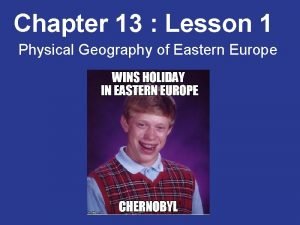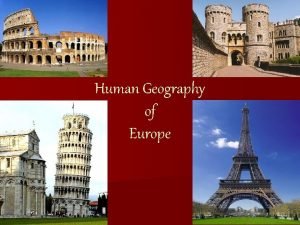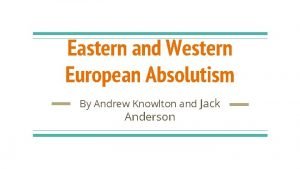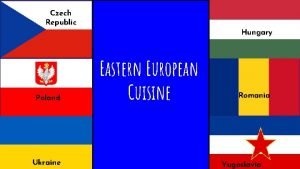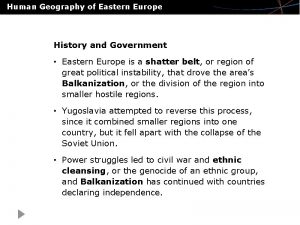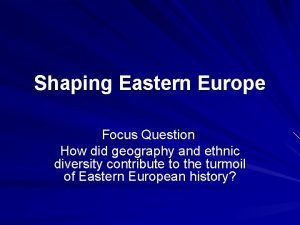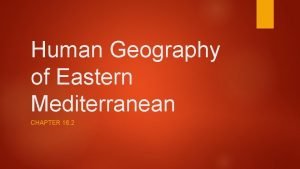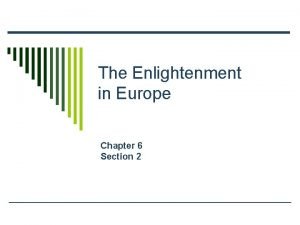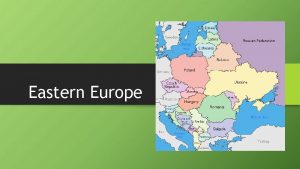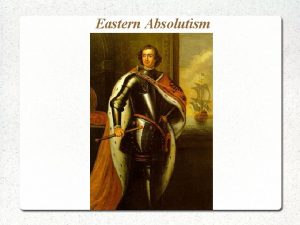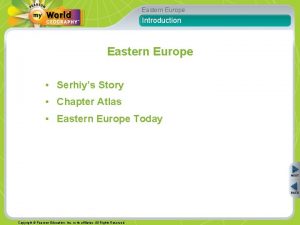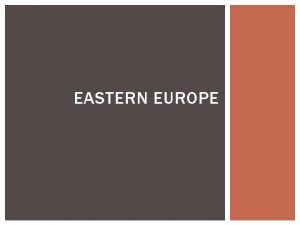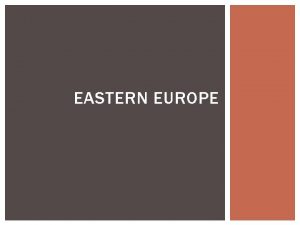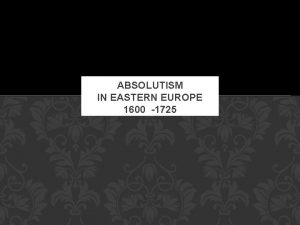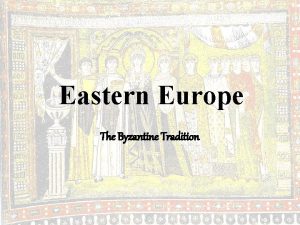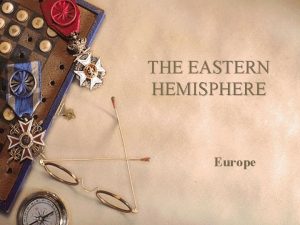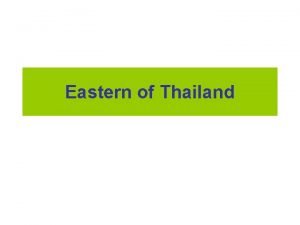Chapter 18 19 Eastern Europe Eastern Europe in










- Slides: 10

Chapter 18 & 19

Eastern. Europe �Eastern Europe in 1989 included eight nations: Albania, Bulgaria, Czecholsovakia, East Germany , Hungary, Poland, Romania, and Yugoslavia: �Today: Czech Republic, Poland, Slovakia, Slovenia, Croatia, Bosina and Herzegovina, Serbia, Albania, Macedonia, Bulgaria, Romania. �Three Eastern nations have their capitals on rivers: Poland, Czech Republic, Slovakia, Hungary, Slovenia, Croatia, Serbia, Macedonia. �Rivers are important to this region there are eight rivers that pass through these countries.

Eastern. Europe �Landform that separates the Hungarian Basin region from the plains of Poland are the Carpathian Mountains. �The Balkan Mountains have prevented contact among ethnic groups in this region.

Eastern. Europe �Most of these nations are multiethnic- or composed of many ethnic groups. � There are many languages spoken in Eastern Europe, Polish, Czech, Slovak, Hungarian. All between the Baltic and Black Sea. � The Slavic languages are the most common of Eastern Europe.

Eastern. Europe �Climate and Vegetation: � There are four climate regions of Eastern Europe. �In Eastern Europe: Mediterranean, humid subtropical, marine west coast, and humid continental. �The dominate type of vegetation in Eastern Europe is mixed forest (deciduous and coniferous)

Eastern. Europe �In class assignment complete the questions on page 358 -359 1 -3 �Write complete sentences.

Eastern. Europe �The Danube is the major river highway of Eastern Europe. �One cause of the ethnic clashes common in Eastern Europe is because most nations in the region have at least one large minority group. �Climate changes from humid continental climate to a marine west coast climate.

Poland: �National Identity: is important to the Polish people. � Sense of what makes the polish people a nation � Poland is covered by the North European Plain. � Thick forest covered the flat lands, but most of the trees were cut down. � Soil is fertile � Has valuable industrial resources, Carpathian Mountain region of south, large deposits of coal, sulfur and copper. � Depends on two minerals from other countries. Iron and petroleum.

Poland: �Polish Nation � The Holocaust; no more than 9, 000 Jews live in all Poland, home of more than 3 million Jews before WWII. . � Nazis sealed off Jewish ghettos in Polish cities, Warsaw � Ghettos areas of a city where a minority is forced to live. � Warsaw rebelled and the Nazis burned it to the ground � 6 concentration camps in Poland � Destruction of Human life is known as the Holocaust.

Poland: �Fleeing Soviet Control: � After WWII the Soviet Union controlled Poland. � Expanded the borders into what once been Germany.
 How do mountains and plains define eastern europe
How do mountains and plains define eastern europe Igcse history chapter 6
Igcse history chapter 6 What is considered eastern europe
What is considered eastern europe Differences between western and eastern europe
Differences between western and eastern europe Eastern european cuisine
Eastern european cuisine Eastern europe landforms
Eastern europe landforms Human geography of eastern europe
Human geography of eastern europe Offshoring eastern europe
Offshoring eastern europe How did its rivers affect eastern europe
How did its rivers affect eastern europe Chapter 16 eastern mediterranean answers
Chapter 16 eastern mediterranean answers The enlightenment in europe chapter 6 section 2
The enlightenment in europe chapter 6 section 2
